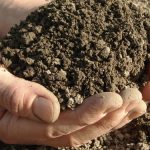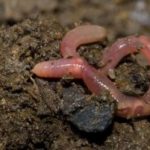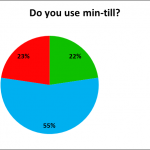How would you define soil?
 Soil is unique in every field. It is a result of 12,000 years of interaction between the parent material (aspects underneath the soil, e.g. bedrock) and factors from above (e.g. climate)
Soil is unique in every field. It is a result of 12,000 years of interaction between the parent material (aspects underneath the soil, e.g. bedrock) and factors from above (e.g. climate)- The mix of the climate and the geology creates a unique specialist ecosystem that is alive and interactive
What is in soil?
- Over one fourth of all living species on earth. The classification and identification of all the populations present is by no means complete
- In one jam jar of soil there is somewhere between 1 and 1,000,000,000,000 (trillion) bacteria, over 10km of fungal hyphae, a few thousand nematodes, and tens of thousands of single celled protozoa, as well as the visible organisms including earthworms, insects, small vertebrates, and plants
What do organisms in the soil do?
- As the organisms grow, they eat and move their way through the soil and perform a vast array of functions
- Beneficial microbes decompose available organic matter including manure and plant residues; fix atmospheric nitrogen and solubise soil minerals into plant available forms; store and recycle soil nutrients; enhance soil aggregation; build soil organic matter and increase nutrient and moisture retention
How do I determine the populations in my soil?
- Limiting factors e.g. those not able to be changed by management practices. These include soil texture (which sets the surface area of the soil), depth, parent material and mineralogy
- Defining factors which include aspects such as climate, litter quality, and net primary productivity. You may have more control over some of these
- A range of management factors which include things like crop selection, organic matter inputs, soil management and water balance. All these factors can be controlled
 Why is soil biology important?
Why is soil biology important?
- Biology present in the soil helps to add and stabilise the structure
- Processes undertaken by soil biota impact on the plant and animal production systems by modifying the soil’s physical, chemical and biological environment within which plants grow and persist
- Soil biota can have a direct effect on soil structure. The stability of aggregates is related to a level of soil organic matter and to the activity of soil organisms
- Soil biology is crucial to the functioning of the phosphorus cycle. Different organisms are responsible for the mineralisation of organic phosphorus from organic to useable inorganic forms, suitable for plant uptake. 70-80% of identifiable free living soil microbes produce enzymes involved in phosphorus mineralisation
How can I increase biological activity in my soil?
- Minimise tillage. Evidence suggests that increasing inputs of organic matter and reducing tillage act together to promote increased biological activity. There is some indication that resilience to extreme weather events may be increased as a result
- Increase inputs of organic matter. Increased organic matter inputs to maintain good baseline activities will help increase resilience to tillage disturbance
- Vary crops in rotations and in the field


